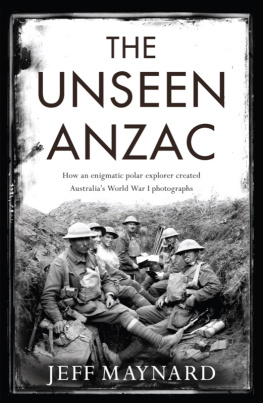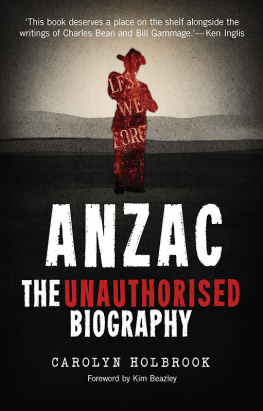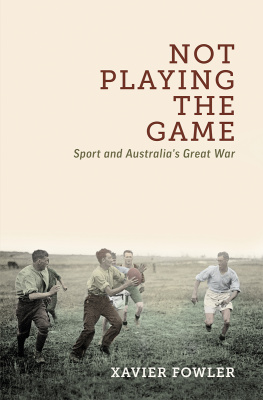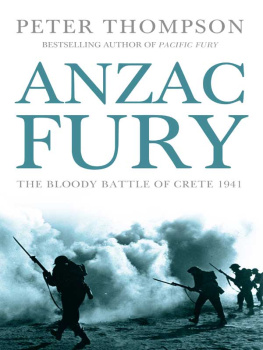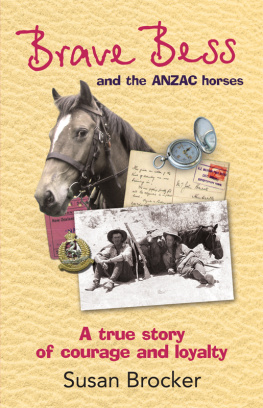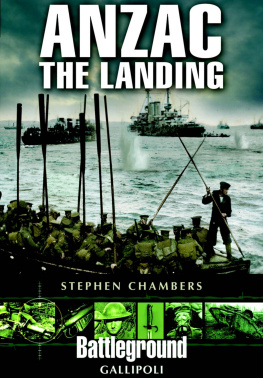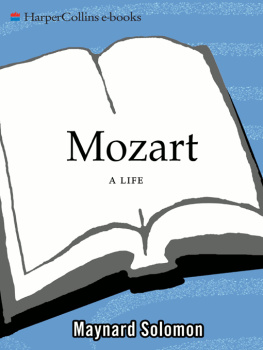Jeff Maynard - Unseen Anzac: How an Enigmatic Explorer Created Australias World War I Photographs
Here you can read online Jeff Maynard - Unseen Anzac: How an Enigmatic Explorer Created Australias World War I Photographs full text of the book (entire story) in english for free. Download pdf and epub, get meaning, cover and reviews about this ebook. year: 2015, publisher: Scribe Publications, genre: Detective and thriller. Description of the work, (preface) as well as reviews are available. Best literature library LitArk.com created for fans of good reading and offers a wide selection of genres:
Romance novel
Science fiction
Adventure
Detective
Science
History
Home and family
Prose
Art
Politics
Computer
Non-fiction
Religion
Business
Children
Humor
Choose a favorite category and find really read worthwhile books. Enjoy immersion in the world of imagination, feel the emotions of the characters or learn something new for yourself, make an fascinating discovery.
- Book:Unseen Anzac: How an Enigmatic Explorer Created Australias World War I Photographs
- Author:
- Publisher:Scribe Publications
- Genre:
- Year:2015
- Rating:4 / 5
- Favourites:Add to favourites
- Your mark:
- 80
- 1
- 2
- 3
- 4
- 5
Unseen Anzac: How an Enigmatic Explorer Created Australias World War I Photographs: summary, description and annotation
We offer to read an annotation, description, summary or preface (depends on what the author of the book "Unseen Anzac: How an Enigmatic Explorer Created Australias World War I Photographs" wrote himself). If you haven't found the necessary information about the book — write in the comments, we will try to find it.
Jeff Maynard: author's other books
Who wrote Unseen Anzac: How an Enigmatic Explorer Created Australias World War I Photographs? Find out the surname, the name of the author of the book and a list of all author's works by series.
Unseen Anzac: How an Enigmatic Explorer Created Australias World War I Photographs — read online for free the complete book (whole text) full work
Below is the text of the book, divided by pages. System saving the place of the last page read, allows you to conveniently read the book "Unseen Anzac: How an Enigmatic Explorer Created Australias World War I Photographs" online for free, without having to search again every time where you left off. Put a bookmark, and you can go to the page where you finished reading at any time.
Font size:
Interval:
Bookmark:


THE UNSEEN UNZAC
Jeff Maynard is an author and documentary maker. His books include Niagaras Gold, Divers in Time, and Wings of Ice. He is a former editor of Australian Motorcycle News, and retains a keen interest in classic motorcycles. He is also a member of the Explorers Club, and is on the board of the Historical Diving Society. Jeff continues to research Sir Hubert Wilkins and locate his records and artefacts in Australia, Europe, and the USA. Jeff lives in Melbourne with his wife, Zoe, and their family.
To Herbert Clifford (Cliff) Kadow
Scribe Publications
1820 Edward St, Brunswick, Victoria, Australia 3056
2 John St, Clerkenwell, London, WC1N 2ES, United Kingdom
First published by Scribe 2015
Copyright Jeff Maynard 2015
All rights reserved. Without limiting the rights under copyright reserved above, no part of this publication may be reproduced, stored in or introduced into a retrieval system, or transmitted, in any form or by any means (electronic, mechanical, photocopying, recording or otherwise) without the prior written permission of the publishers of this book.
National Library of Australia Cataloguing-in-Publication data
Maynard, Jeff, author.
The Unseen Anzac: how an enigmatic polar explorer created Australias World War I photographs / Jeff Maynard.
9781925106787 (hardback)
9781925307153 (e-book)
1. Wilkins, G. H. (George Hubert) Sir, 1888-1958. 2. Australian War MemorialPhotograph collections. 3. War photographersAustraliaBiography. 4. World War, 1914-1918Pictorial works. 5. War photographyAustraliaHistory.
940.40994
scribepublications.com.au
scribepublications.co.uk
CONTENTS
*
by Dr Brendan Nelson, Australian War Memorial
Introduction:
PART I October 1888August 1917
PART II August 1917June 1919
PART III June 1919The Present
Afterword:
Appendix:
AUTHORS NOTE
*
The life of George Hubert Wilkins (later Sir Hubert) has always been surrounded by myth and secrecy, and much that has been written about him is incorrect. In an attempt to separate fiction from fact, I have avoided dramatising events and I have not invented conversations. I quote directly from original sources whenever possible; often I have had to rely on what people wrote about Wilkins. Information about his time at the Western Front can be gleaned from the diaries of Australias official World War I historian, Charles Bean. The diaries and notebooks of Bean are held at the Australian War Memorial, Canberra, and can be read online via the memorials website. Many of the notebooks do not have page numbers, so, when I reference them, I have put pdf before the page to indicate that I am working from the online version.
I also quote from private collections of Wilkins letters and manuscripts held by Dr David Larson and Michael Ross in the United States. I appreciate that these collections are not available to the public, so, for some of my contentious claims, readers will need to trust my word. Both Ross and Larson have requested I keep their personal details confidential.
Volume XII of the Official History of Australia in the War of 19141918 was published in 1923. This volume is sub-titled Photographic Record of the War , and contains 753 photographs. The majority of the photographs from the Western Front are credited to an Australian Official Photographer.* I discovered Wilkins personal copy of this volume in Michael Rosss collection, in which Wilkins had pencilled his initials in the corner of the photographs that he took. For brevity, when I reference this book I simply call it Wilkins Volume XII . (Michael Ross has since donated this book to the Australian War Memorial.)
[*In the Official History , photographs are credited to an Australian Official Photographer, while elsewhere they are usually credited to an Unknown Australian Official Photographer.]
The Australian War Memorial has over 6,000 official photographs of the Anzacs at the Western Front. They are numbered and usually prefixed with the letter E. Most of the official photographs can be viewed online, so I regularly direct the reader to examples I write about in the text.* The diaries of Frank Hurley can be read online from the website of the National Library of Australia.
[*About 40 per cent of the E-series photographs were taken after the Armistice.]
With the exception of the final one, Wilkins wrote all the quotations I have inserted at the beginning of each chapter. They are taken from his correspondence, speeches, or books. The final quotation was, supposedly, received telepathically by Harold Sherman, eight months after Wilkins death.
Finally, for readers unfamiliar with military formations and acronyms, a brief overview is given before the index.
FOREWORD
Dr Brendan Nelson
Director, Australian War Memorial
*
By any standard, the life of George Hubert Wilkins was an extraordinary one. From humble beginnings in rural South Australia, Wilkins became a renowned photographer and cinematographer, aviator, war correspondent, scientist, author, and, above all else, polar explorer. Wilkins Sound, the Wilkins Ice Shelf, and the Wilkins Coast in Antarctica were all named in his honour. He won awards from a number of international geographic societies, including the Royal Geographic Societys Patrons Medal and the Samuel Finley Breese Morse Medal of the American Geographical Society. He was knighted in June 1928. Celebrated in his lifetime, he is regrettably little remembered in Australia today. Yet Wilkins was truly one of the great adventurers of the 20th century.
Wilkins greatest passion was for polar exploration. He first experienced the Arctic in 1913, when he joined Vilhjalmur Stefanssons Canadian Arctic Expedition. The expedition was not a success. Wilkins was with Stefansson when his brigantine, the Karluk , had to be abandoned in the pack ice. Wilkins remained undaunted, and covered thousands of miles in the Arctic by foot over the next three years. In fact, Wilkins conducted expeditions to both polar regions over and over in his lifetime. He was with the legendary Ernest Shackleton in 192122 on Shackletons last expedition to Antarctica, and made another six expeditions there between 1928 and 1939. But Wilkins was perhaps most familiar with the Arctic, which he visited every year for the 16 years before his death.
In his lifetime, Wilkins compiled a stunning list of firsts. Combining his love of flying with his love of polar exploration, he became the first man to conduct aerial explorations of the Antarctic, and indeed became the first man to fly over the Antarctic continent. Although not the first to fly over the North Pole, he was the first to fly over the Arctic Ocean, earning his knighthood in the process. He later became consumed with the idea that it would be possible to take a submarine beneath the Arctic pack ice, although this idea was ridiculed at the time. The American submarine he leased to attempt it was plagued with problems and did not reach the North Pole, but Wilkins nevertheless succeeded in piloting the partially disabled machine under the ice in 1931, becoming the first man to do so.
Wilkins love of adventure extended far beyond his polar exploration, although the fame he achieved from his icy adventures opened doors for him. In 1919, he was the navigator in an aircraft competing for 10,000, which the Australian government offered for the first all-Australian crew to fly from England to Australia. The enterprise was sadly abandoned in Crete after the plane crash-landed, terminally damaging its port engine. Four years later, Wilkins was contracted by the British Museum to conduct a comprehensive survey of northern Australia, which took him two-and-a-half years. He was a passenger on the Graf Zeppelin on its around-the-world voyage in 1929 and, in 1935, he and his wife were guests on the Hindenburg for the zeppelins maiden voyage to America.
Next pageFont size:
Interval:
Bookmark:
Similar books «Unseen Anzac: How an Enigmatic Explorer Created Australias World War I Photographs»
Look at similar books to Unseen Anzac: How an Enigmatic Explorer Created Australias World War I Photographs. We have selected literature similar in name and meaning in the hope of providing readers with more options to find new, interesting, not yet read works.
Discussion, reviews of the book Unseen Anzac: How an Enigmatic Explorer Created Australias World War I Photographs and just readers' own opinions. Leave your comments, write what you think about the work, its meaning or the main characters. Specify what exactly you liked and what you didn't like, and why you think so.

